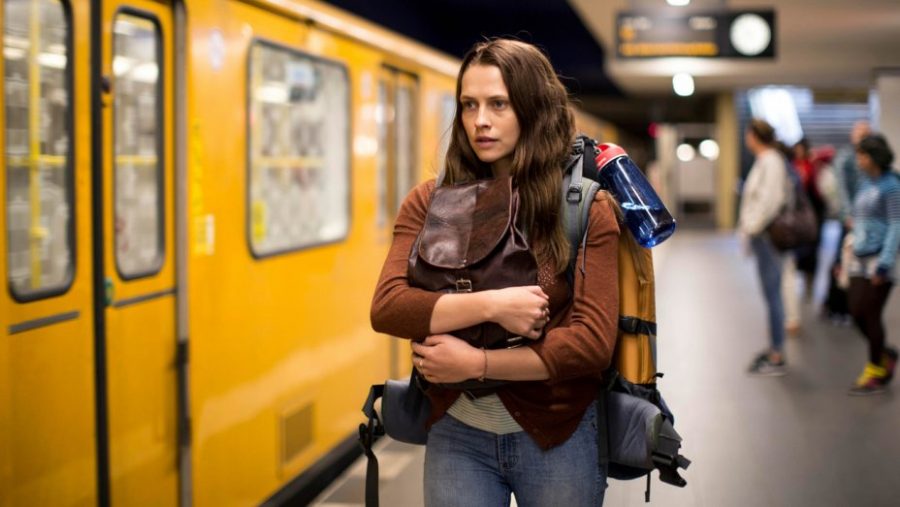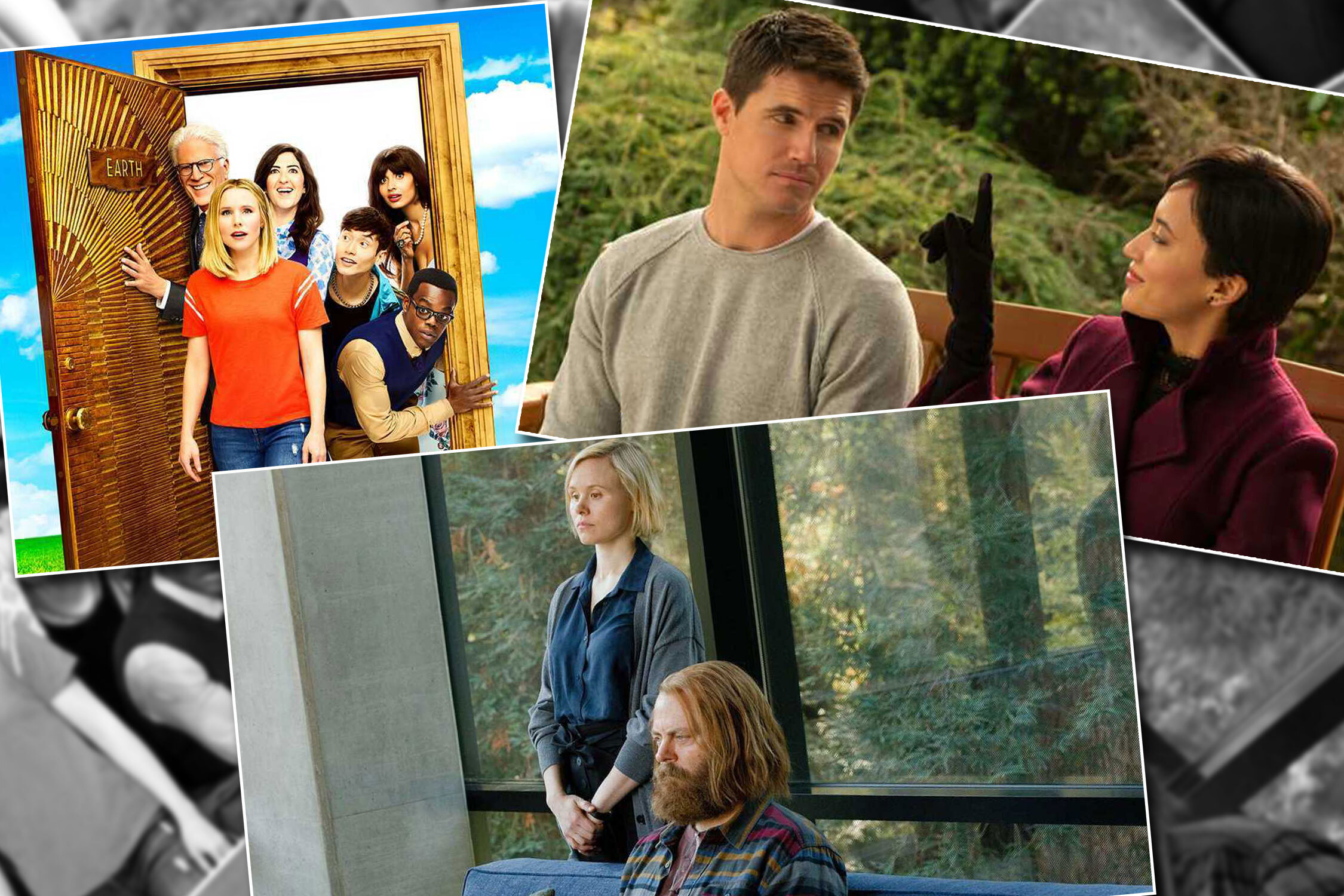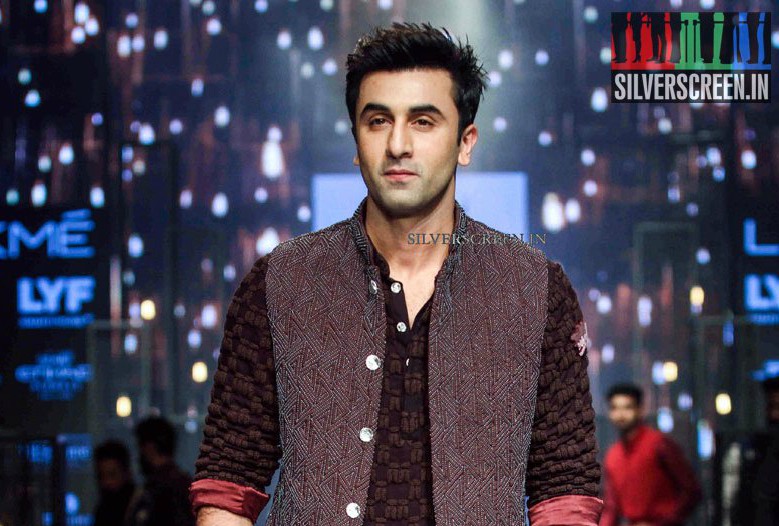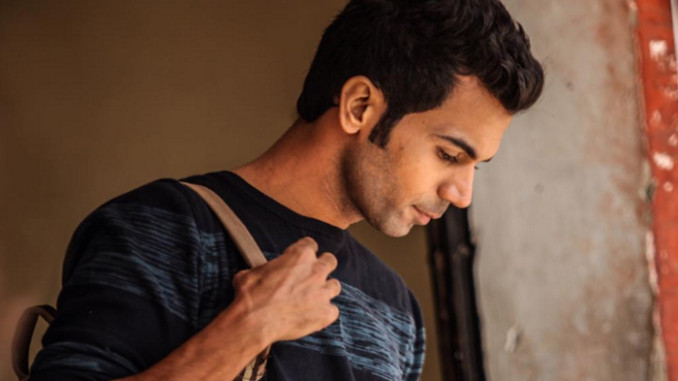A decade and a half later, the Dil Chahtha Hai phenomenon still holds sway with our road movies. Picturesque landscapes, perfect itineraries, rich, urban youth having a whale of a time in foreign lands – travel in Indian movies rarely portray the lovely, often dangerous unpredictability that the experience is all about.
What if Tara in Imitiaz Ali’s Tamasha was a closet psychopath? Would Ved have guessed this secret about her in their first encounter when they flirtatiously decided to do spend the rest of their vacation together?
That nightmare is what Clare (Teresa Palmer) goes through in Cate Shortland’s Berlin Syndrome. She is roaming the streets of Berlin and photographing its architecture, when she bumps into a handsome young German named Andi. He is friendly, and speaks a broken version of English that she finds cute. She drifts towards him like a leaf towards a whirlpool, unaware of the looming danger. After a night of love, she wakes up in his apartment to find the front door tightly locked, her phone SIM card gone, and a word ‘mine’ stamped on her shoulder. She tries to break the window, but fails for it’s double-paned. When Andi comes home from work, she tries to reason with him, plead with him to let her go, and when he refuses, she attacks him and runs away, only to be chased and caught. He breaks her arm like a piece of twig, and warns her never to try running away again.
What a disastrous turn to a solo adventure!
Although most of Berlin Syndrome unfurls inside an apartment and the lead characters aren’t on the move, it has the soul of a travel movie. Andi chains Clare to him as though he doesn’t want to let her wander ever again. In a beautifully shot scene in the film, Clare is alone in the apartment. She whirls down a dim-lit living room on a rolling chair, towards a glass window. Her hair is dishevelled, and the apartment is wrapped in an eerie silence. But she contradicts the sombreness of her surroundings with her lively movements. She spreads her arms as though they are wings.
At the end of the film, predictably, Clare escapes Andi, and the final shot is of her in a taxi, clutching her passport and papers, on her way to the airport.
Berlin Syndrome is a remarkable film for its unabashed unromantic approach to solo travel. It is not a theme that many filmmakers have taken a liking to. For a long time now, characters in Indian films have hit the road for sublime experiences that transform them into better individuals. The long, unfamiliar road that the characters tread provide immense cinematic moments too – like the stunning sunset that Ved and Tara (Tamasha, 2015) watch from a cliff in Corsica, or the tender sight of a wild stream that touches a chord within Hari (Fahadh Faasil) in North 24 Kaatham (Malayalam, 2013). More practical and real problems that a traveller encounters – like the hotel reservations that go unreserved, the cash that run out, and the words that get lost in translation in foreign countries – are comfortably overlooked.
That’s one of the things that If It’s Tuesday It Must Be Belgium (1969), a vintage comedy which had a super-hit run in Madras, is centered around: the awkward misadventures of a bunch of American tourists on a bus trip through Europe. The tourists are on a tight itinerary. They stop at cities like Venice, Rome and Amsterdam, do the regular touristy things, and mess it up a little. The film is remembered for its realistic (and immensely fun) take on a Euro trip.
The potential troubles that a traveller can get into is also the subject of National Geographic Channel’s acclaimed documentary series, Locked Up Abroad. It features some gripping tales of people who were arrested for various reasons while travelling abroad.
*****
The unpredictable nature of travel aside, some of the best road/travel movies in the world also give a honest, fascinating glimpse into the history and culture of the landscape and the era where they are set in. For one, Walter Salles’ Motor Cycle Diaries takes you on a tour of Latin America and the socio-political turmoil in the region. Wim Wender’s Paris Texas is a portrait of the rugged American terrains, among many other things. Oscar-nominated Easy Rider (1969), directed by Dennis Hopper, mirrors the morally corrupt and tense America in the Vietnam war-era. Berlin Syndrome has an interesting under-layer that cracks open the gloomy oppressed atmosphere of East Germany where Andi spent his childhood. When If It’s Tuesday, It Has To Be Belgium was shot, Europe was less busy, less complicated, and lovelier than it is now. Euro wasn’t there yet, and tourism wasn’t a hideous industry.
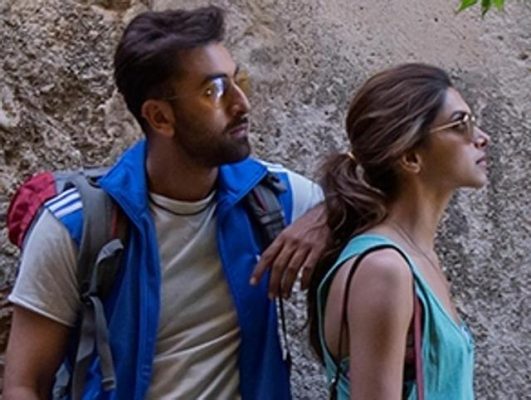
Indian travel movies though, rarely betray the vulnerability – of the traveller or the destination. Also, the most striking thing that Indian travel movies show is the spending power that the characters wield. Statistics indicate that it has not been very long since Indians, in large numbers, started vacationing in foreign countries. A Make My Trip survey says that there is a 245% rise in the number of international travellers from India in the period between 2006 and 2016.
So, it shouldn’t surprise anyone that the three guys in Zoya Akhtar’s Zindagi Na Milegi Dobara are able to indulge in exotic adventures of their choice in a European city, without any material concern. In Imitiaz’s most recent Jab Harry Met Sejal, a young woman from Mumbai roams around Europe, spending money lavishly, in the pretext of searching for a ring. The two movies do not touch upon the socio-cultural context of the places they travel to, through. They are superficial near-fantasy romantic dramas.
It is safe to assume that this penchant for flamboyant travel films about urban youth distressed by identity crisis, was launched by Farhan Akhtar’s Dil Chahta Hai (2001). It established that travelling was, over anything else, a journey towards one’s own inner conscience. In Dil Chahta Hai, three youngsters from Mumbai make it a point to travel to Goa every year. They pack light, and drive a convertible through the beautiful road that cuts through Western Ghats. In Goa, with a Shankar Mahadevan title track playing in the backdrop, they stare into the sea from Fort Chapora (which is now informally known as Dil Chahta Hai fort), pondering over life and relationships. Such was the influence of the film on Indian pop-culture that 15 years later, a Malayalam film, Anandam (2017), paid a cinematic tribute to it.
*****

The glamorous travel films from the sub-continent appear to be a recent phenomenon, though. 1957‘s Nau Do Gyarah, is one of the earliest Indian movies in which road plays a major role. A young man, Madan (Dev Anand) is driving an old van to Mumbai to meet his uncle and make a claim to his wealth. He is joined by a run-away bride, dressed up as a Punjabi boy. There are long and wide shots of the sprawling countryside through which they drive the van. It’s summer, and you can feel sweat dripping down the characters’ brow. Nau Do Gyarah, in spite of being a breezy romantic tale, was not a glossy film.
The first road movies made in Malayalam and Tamil – Kannoor Deluxe (1969, Malayalam), Madras To Pondicherry (1966, Tamil) – were short town-to-town journeys during which the travellers solve a crime and get into some low-key adventures. The focus wasn’t on the sights on the way, but entirely on the time that the passengers spent with one another. External conflicts played central to the plot, not the internal turmoils of the characters, unlike what the recent Indian travel movies focus on.
*****
Recommended
One of the most romantic and popular road movies set in India is a Hollywood production – Wes Anderson’s The Darjeeling Limited (2007). Three American brothers set out on a trip to Darjeeling on a luxury tourist train to meet their mother who is working in a monastery in the north-eastern hill station. Anderson milks the most out of the Indian landscape through which the train travels – stunning shots of the small towns on the way, the hills and villages where snakes and monkeys are worshipped, and so on.
Dev Benegal’s Road, The Movie, meanwhile, is an adventurous journey of a young slacker through the heart of Rajasthan in an old rickety van which used to be a travelling cinema. There are scenes in the film where villagers turn up in groups to watch old classics that the film’s protagonists screen in odd places. It shows you the kind of visuals a young millennial expects to see on his first road trip – a magical mela in the middle of the white desert, an alluring gypsy woman who appears out of nowhere, some misadventures with a local water lord and his gun-wielding men.
Both The Darjeeling Limted and Road, The Movie unintentionally beam the perceptions of certain sections of the world about India. While TDL sticks to the world’s idea of the exotic country that India is, Road, The Movie is the picture that urban India has, of the wild, rural India.
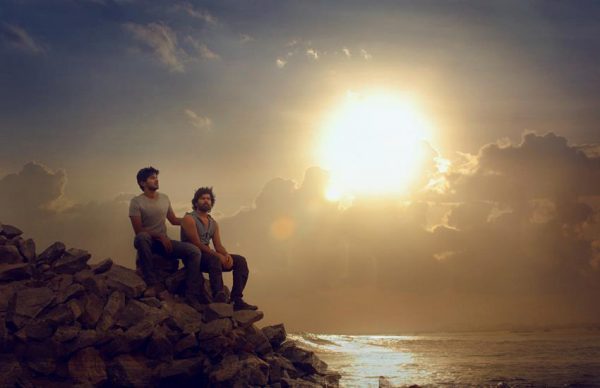
Samir Thahir’s 2013 film, Neelakasham Pachakkadal Chuvanna Bhoomi, is, on the other hand, a naive, yet sincere attempt at road movie genre. Dulquer Salmaan and Sunny Wayne played two bikers who ride to north-east India from Kerala, passing through towns and villages in the country’s east coast. There was a sense of unpredictability in the film’s proceedings. The characters took whatever the road offered them. They fight off bandits, live with a bunch of villagers in West Bengal, eat Biryani from Kolkata’s favourite eatery, and even come across a village where a communal riot is underway. There are long moments of silence in the film, where the characters do nothing, but get lost in the serenity of the moment. The film, shot by Gireesh Gangadharan, has beautiful visuals of the region the guys travel through.
A number of road/travel movies are now in the pipeline. Saif Ali Khan’s upcoming film Chef, directed by Raja Krishna Menon, is a food movie that involves a road trip through various cities in India. Irrfan Khan has teamed up with two southern stars, Parvathy and Dulquer, in two separate travel movies, directed by Tanuja Chandra and Akarsh Khurana respectively. A vast, versatile landscape brimming with a lot of sociopolitical and cultural turmoils, this could finally be the age Indian cinema produces some of the best travel movies ever.
*****
